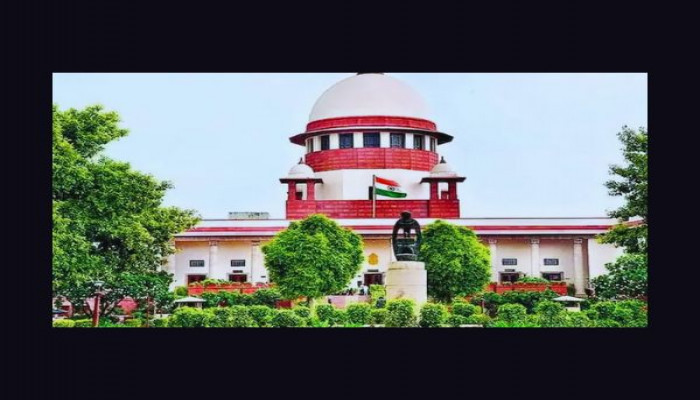Supreme Court invokes Article 142 to clear Tamil Nadu bills, overrules governor and President’s actions
- In Reports
- 09:20 PM, Apr 10, 2025
- Myind Staff
In a rare and unprecedented move, the Supreme Court of India on April 8, 2025, exercised its extraordinary powers under Article 142 of the Constitution to clear 10 Bills passed by the Tamil Nadu Legislative Assembly, including seven that had previously been rejected by the President of India. The decision marks a significant intervention by the judiciary into matters traditionally under the domain of the executive and legislature, triggering a fresh debate on the limits of judicial authority.
The judgment came as part of a legal case challenging Tamil Nadu Governor RN Ravi’s prolonged inaction on multiple Bills, some of which had remained pending since as early as January 2020. The apex court’s two-judge bench, comprising Justice JB Pardiwala and Justice R Mahadevan, ruled that the governor’s delay in granting assent to the Bills was unconstitutional and that he was obligated to approve them after they were re-passed by the state Assembly.
Supreme Court Strikes Down President’s Rejection of Bills
Among the 10 Bills cleared by the court, seven had already been rejected by President Droupadi Murmu. The President had approved only one, while two were neither accepted nor declined. Despite this, the Supreme Court declared all 10 Bills as having received valid assent, thereby rendering the President’s rejections and pending decisions void.
“The top court deemed the 10 Bills to have received assent, declaring the actions of President Droupadi Murmu — who assented to only one of the Bills, rejected seven, and did not consider two — to be void,” The Hindu reported.
This sweeping decision was delivered through the court's application of Article 142, which grants it the authority to ensure "complete justice" in any matter before it. While the article has historically been invoked sparingly, its use has become increasingly frequent, prompting both legal scrutiny and public discourse over judicial overreach.
The Legal Background and Political Context
The Tamil Nadu government filed a writ petition in the Supreme Court in October 2023, accusing Governor RN Ravi of “inaction, omission, delay, and failure” in giving assent to a series of Bills. Out of the 12 Bills mentioned in the petition, the governor had withheld assent for 10, while reserving two for the President's consideration.
Most of these Bills were aimed at reducing the governor’s control over state universities, particularly the power to appoint Vice-Chancellors, a role the governor holds as the ex-officio Chancellor. These legislative changes, therefore, directly challenged one of the governor’s most significant authorities in state governance.
As the case was being heard, Governor Ravi returned all 10 Bills to the Tamil Nadu Assembly in November 2023. In response, the DMK-led state government convened a special session on November 18, during which the Assembly passed the same Bills again without amendments and sent them back to the governor. Under constitutional provisions, the governor was now bound to give assent, but he did not comply.
Among the Bills, two — the Chennai University (Amendment) Bill, 2022 and the Tamil Nadu Siddha Medical University Bill, 2022 — were forwarded to the President for consideration, while the rest continued to face delay or rejection from the governor. Between January 2020 and August 2023, these Bills remained in limbo, despite being passed twice by the legislature.
Supreme Court Labels Governor’s Delay as Unconstitutional
In its verdict, the Supreme Court took strong exception to the indefinite delay by the governor, describing the practice of “pocket veto” — the act of withholding assent without making a decision — as unconstitutional. The bench emphasised that under Article 200 of the Constitution, once a Bill is passed a second time by the Assembly without amendments, the governor has no choice but to grant assent.
By invoking Article 142, the court not only cleared the Bills but also highlighted systemic concerns around executive accountability. It directed the governor to act with urgency and abide by constitutional timelines in future legislative matters.
While the court’s decision effectively ended the deadlock in Tamil Nadu, it also drew attention to similar concerns in other states, where governors have been accused of delaying or obstructing legislative processes.
Judicial Activism or Necessary Intervention?
The court’s intervention has drawn mixed reactions. Supporters argue that the judiciary acted within its constitutional limits to address executive failure and uphold legislative will. A constitutional expert commented, “When one constitutional functionary failed, and not only failed but acted illegally, and the Bills were pending for several years, then the court can certainly interfere.”
However, critics have labelled the move as “judicial overreach” and a violation of the principle of separation of powers. Salem-based political commentator Kumar Govindan stated, “Using Article 142 in this instance is clear overreach by the Judiciary into the Executive domain… The law has taken (Executive) law into its own hands.”
Political analyst SS Iyengar echoed the concern, saying, “Judicial activism must stop. If the SC can approve Bills which are legislative and administrative in nature, why do we need Governors or the President?” He further argued, “To uphold its constitutional responsibilities, the central government must appeal to the Constitution bench and argue the case. The SC should not take legislative or executive powers into its hands using Article 142.”
Iyengar also warned that the move could set a dangerous precedent where the judiciary overrides executive checks without thorough institutional consultation.
A Historic Judgment with Long-Term Implications
The Supreme Court's decision to invoke Article 142 and approve ten Bills previously stalled by Tamil Nadu’s governor — and rejected by the President — marks a turning point in the ongoing discourse on constitutional roles and institutional boundaries in India. While the verdict resolves a prolonged impasse in Tamil Nadu, it has also sparked intense debate about judicial limits, executive accountability, and the evolving interpretation of constitutional law.
As the central government considers appealing the judgment before a Constitution Bench, this case is likely to become a reference point for future conflicts between state governments, governors, and the Union executive. It underscores the need for clarity, reform, and perhaps even constitutional amendments to define the balance of power among India’s three branches of government more decisively.







Comments